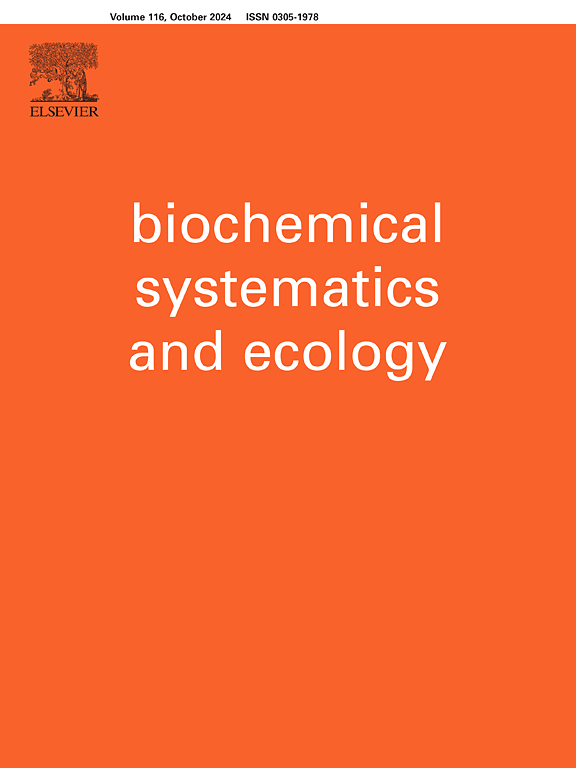Chemical composition and bioactivity of essential oils from Syzygium cumini (L.) skeels leaves and fruits
IF 1.4
4区 生物学
Q4 BIOCHEMISTRY & MOLECULAR BIOLOGY
引用次数: 0
Abstract
Essential oils (EOs) isolated from the different organs of Syzygium cumini (L.) Skeels, Myrtaceae, are widely recognized for their medicinal values. This study aims to compare the essential oils of the leaves (EOL) and fruits (EOF) of S. cumini, growing in Mansoura, Egypt, based on GC-MS profile, α-glucosidase and acetylcholine esterase inhibitory activities. GC-MS analysis of EOL revealed thirty-eight components dominated by β-cadinene (21.27%). Meanwhile, for EOF, it showed thirty-seven components dominated by α-pinene (12.72%). The results were chemometrically evaluated to discriminate the EOs of S. cumini reported from different geographical origins. In addition, both EOL and EOF exhibited promising inhibitory activity against α-glucosidase as compared to acarbose, with IC50 values of 221.2 ± 13.34, 154.6 ± 8.34, and 232.7 ± 12.65 μg/mL, respectively. Meanwhile, for acetylcholinesterase, EOL and EOF were merely inhibitory as compared to donepezil, with IC50 values of 218.0 ± 13.07, 300.0 ± 14.21, and 0.0009 ± 0.0000019 μg/mL, respectively. A molecular docking study identified viridiflorol, epiglobulol, S-α-terpineol, and R-α-terpineol as the top-scoring compounds, with docking scores of −5.066, −4.897, −4.848, and −4.790 kcal/mol. In this study, the antidiabetic and anti-Alzheimer potential of EOF is reported for the first time. According to the results the fruits should be further studied since its consumption can bring complementary nutritional benefits to diabetic patients.
求助全文
约1分钟内获得全文
求助全文
来源期刊

Biochemical Systematics and Ecology
生物-进化生物学
CiteScore
3.00
自引率
12.50%
发文量
147
审稿时长
43 days
期刊介绍:
Biochemical Systematics and Ecology is devoted to the publication of original papers and reviews, both submitted and invited, in two subject areas: I) the application of biochemistry to problems relating to systematic biology of organisms (biochemical systematics); II) the role of biochemistry in interactions between organisms or between an organism and its environment (biochemical ecology).
In the Biochemical Systematics subject area, comparative studies of the distribution of (secondary) metabolites within a wider taxon (e.g. genus or family) are welcome. Comparative studies, encompassing multiple accessions of each of the taxa within their distribution are particularly encouraged. Welcome are also studies combining classical chemosystematic studies (such as comparative HPLC-MS or GC-MS investigations) with (macro-) molecular phylogenetic studies. Studies that involve the comparative use of compounds to help differentiate among species such as adulterants or substitutes that illustrate the applied use of chemosystematics are welcome. In contrast, studies solely employing macromolecular phylogenetic techniques (gene sequences, RAPD studies etc.) will be considered out of scope. Discouraged are manuscripts that report known or new compounds from a single source taxon without addressing a systematic hypothesis. Also considered out of scope are studies using outdated and hard to reproduce macromolecular techniques such as RAPDs in combination with standard chemosystematic techniques such as GC-FID and GC-MS.
 求助内容:
求助内容: 应助结果提醒方式:
应助结果提醒方式:


